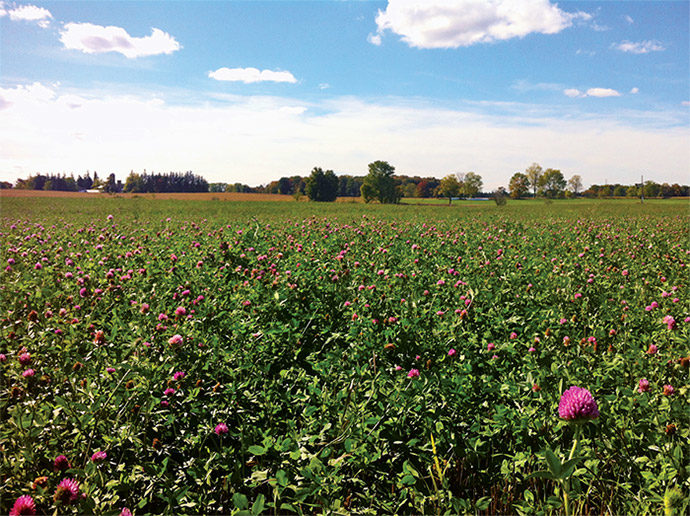No-Till Farmer
Get full access NOW to the most comprehensive, powerful and easy-to-use online resource for no-tillage practices. Just one good idea will pay for your subscription hundreds of times over.

When Aaron McQueen started farming 3 years ago, he wanted to seed a cover crop after winter wheat harvest to reduce erosion and increase soil tilth and soil biological activity.
Frost seeding red clover into winter wheat was once a common practice in his area and highly recommended by agronomists, so he decided to try it.
Working with heavy clay soils in Fisherville, Ontario — where he says there’s a plow pan on essentially every field he farms — McQueen was amazed to see how much soil tilth increased after just one year of growing red clover.
The clover also broke up compaction and, thanks to its nitrogen production, McQueen can usually take a 20-unit-per-acre N credit for his following corn crop.
When timed correctly and properly terminated, frost seeding red clover into winter wheat can be a simple, cost-effective practice that provides many benefits to northern wheat growers.
Frost seeding is actually “cracked soil-surface seeding,” says the University of Wisconsin Extension. Growers broadcast the seed while the soil is still frozen and able to carry equipment, and the seeds fall into the cracks of the soil surface. As the soil thaws, the cracks close shut.
“Those cracks seal up and it’s like you planted the seed with a drill,” says Jim Stute, research director of the Michael Fields Agricultural Institution and former University of Wisconsin Extension agriculture agent. “You get great seed-to-soil contact and beautiful stands.”
Not only does frost seeding allow for good establishment without the…